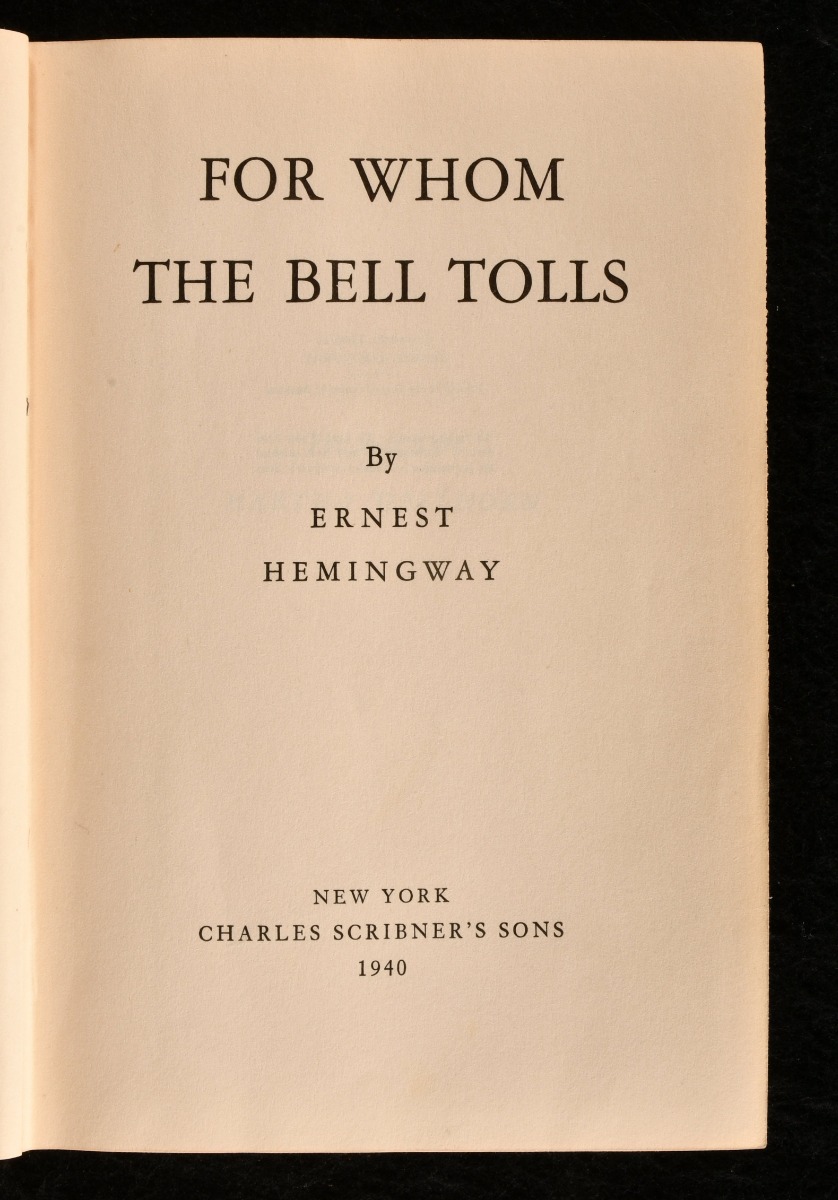
The full (prose) sentence from which it is extracted appears as an epigraph prefacing the narrative. The title is a quotation from “Meditation 17” of John Donne’s Devotions Upon Emergent Occasions (1624): a reflection on the interconnectedness of all human life within God’s plan. The moral universe framing the novel is both allusive and elusive. Her safety gives him the ultimate cause to fight for. In the course of the narrative, she becomes not only Jordan’s lover, but the “lodestar” of his moral universe. The turbulent battle of wills between Jordan and Pablo - the group’s mercurial leader - is offset by the gently unfolding psychic fusion between Jordan and Maria, a traumatised girl rescued by the partisans from Nationalist captivity and sexual exploitation. These intense scenes are offset by Jordan’s forays into the surrounding countryside to scout the land and confer with other bands. The most tense moments in the book occur in the claustrophobic cave that serves as the fighters’ hideout. Conversely, its emotional drama resides in the shifting dynamics of reciprocity between Jordan and the band of irregular fighters during their days of preparation. The novel’s action is concentrated at its end - the battle for the bridge. To accomplish it with even partial success, Jordan needs the help of a motley band of local partisans, but first he must win their trust.

This timing, however, makes the venture near-suicidal. Jordan’s mission is to be conducted in daylight. The plot concentrates on the three days during which Jordan, a literary scholar turned explosives expert, is given the task of demolishing a Nationalist-held bridge, thereby cutting off the expected enemy response to a planned government offensive. It follows the path of a young American, Robert Jordan, serving as a volunteer in the forces of Spain’s left-wing Republican government as it struggles with the Nationalist military insurrection led by General Francisco Franco. The book is set in the Guadarrama mountains, lying between Madrid and Segovia, during the Spanish Civil War (1936-39). As a work addressing the problem of maintaining humanity in the midst of war, it speaks particularly to us on the first anniversary of the Russian invasion of Ukraine. It is certainly his most intricate in terms of ideas, language, and the complex subjectivity of its characters. MANY critics judge For Whom the Bell Tolls (1940) to be Hemingway’s greatest novel.


 0 kommentar(er)
0 kommentar(er)
